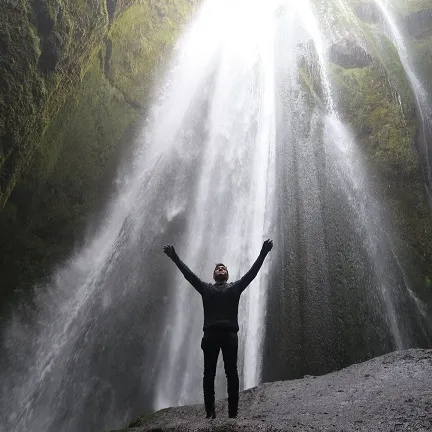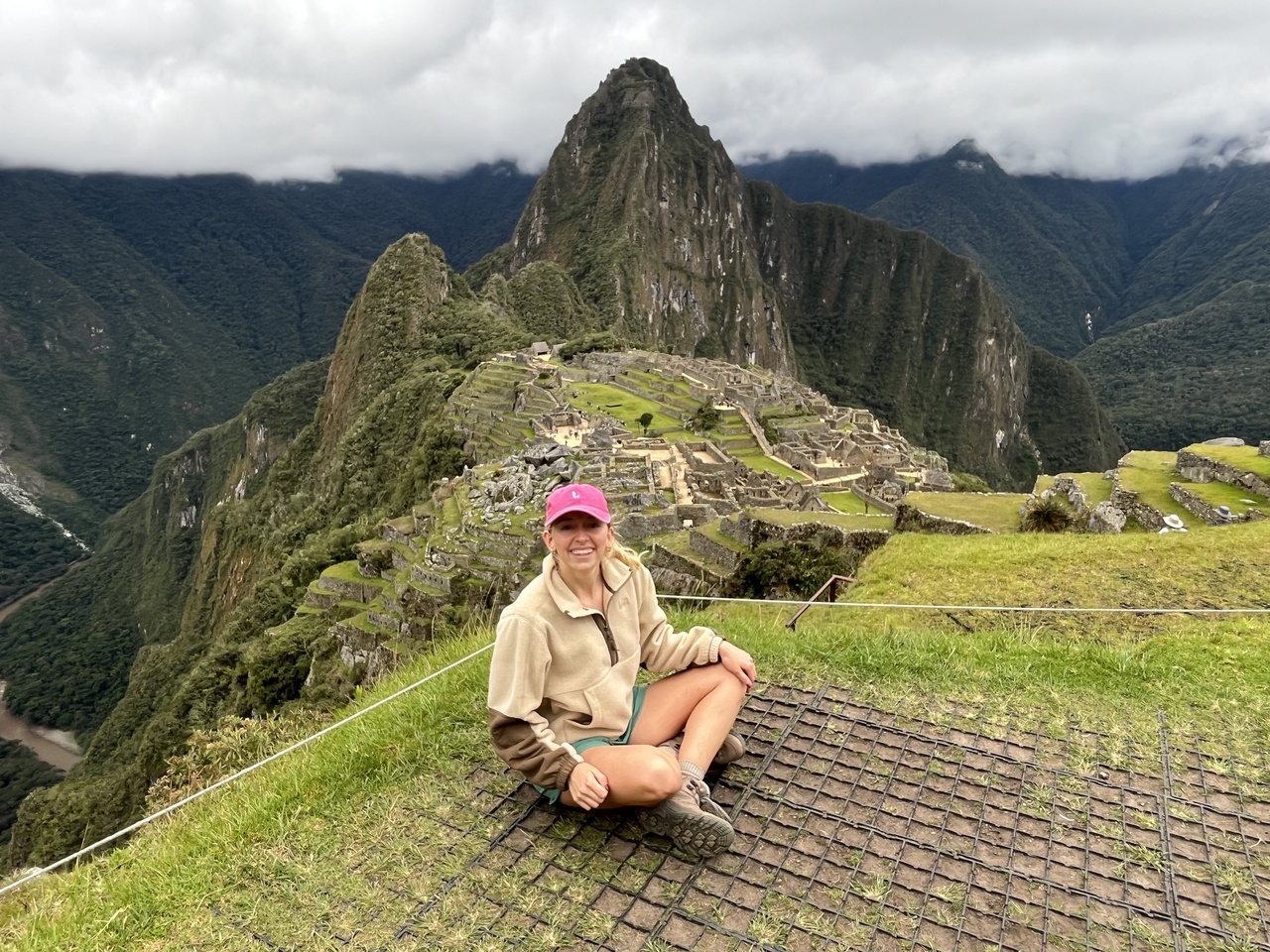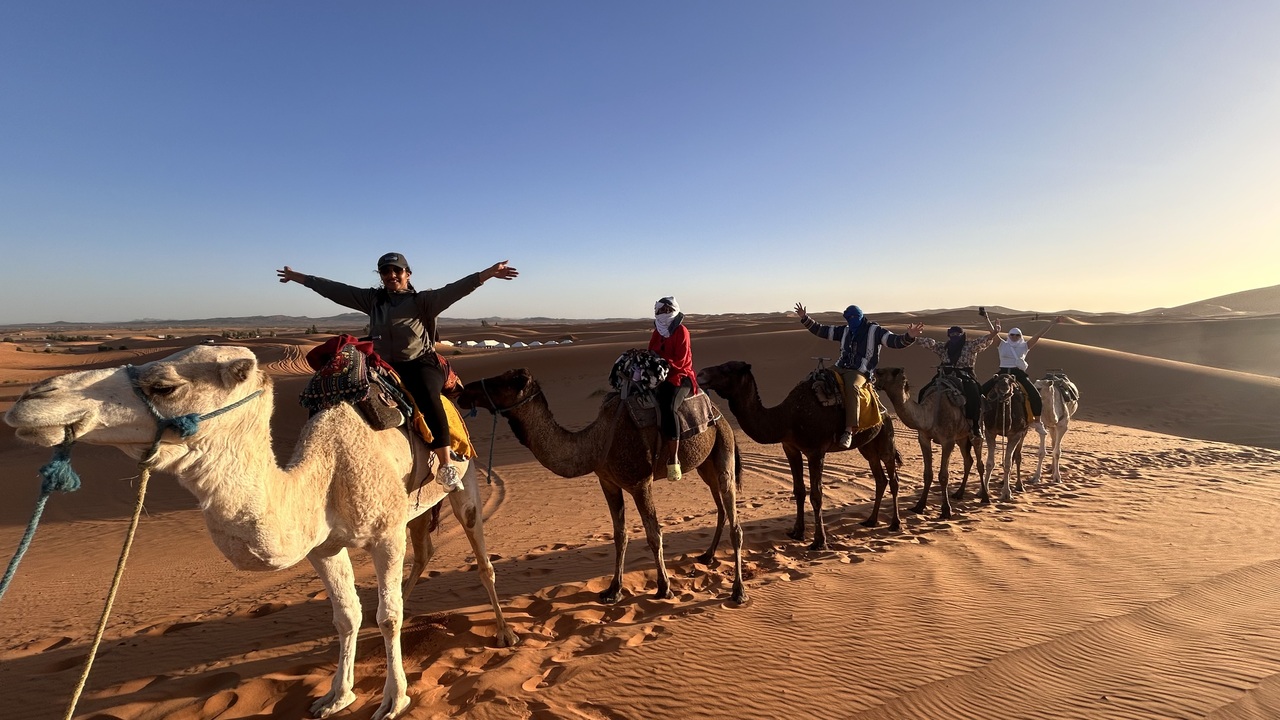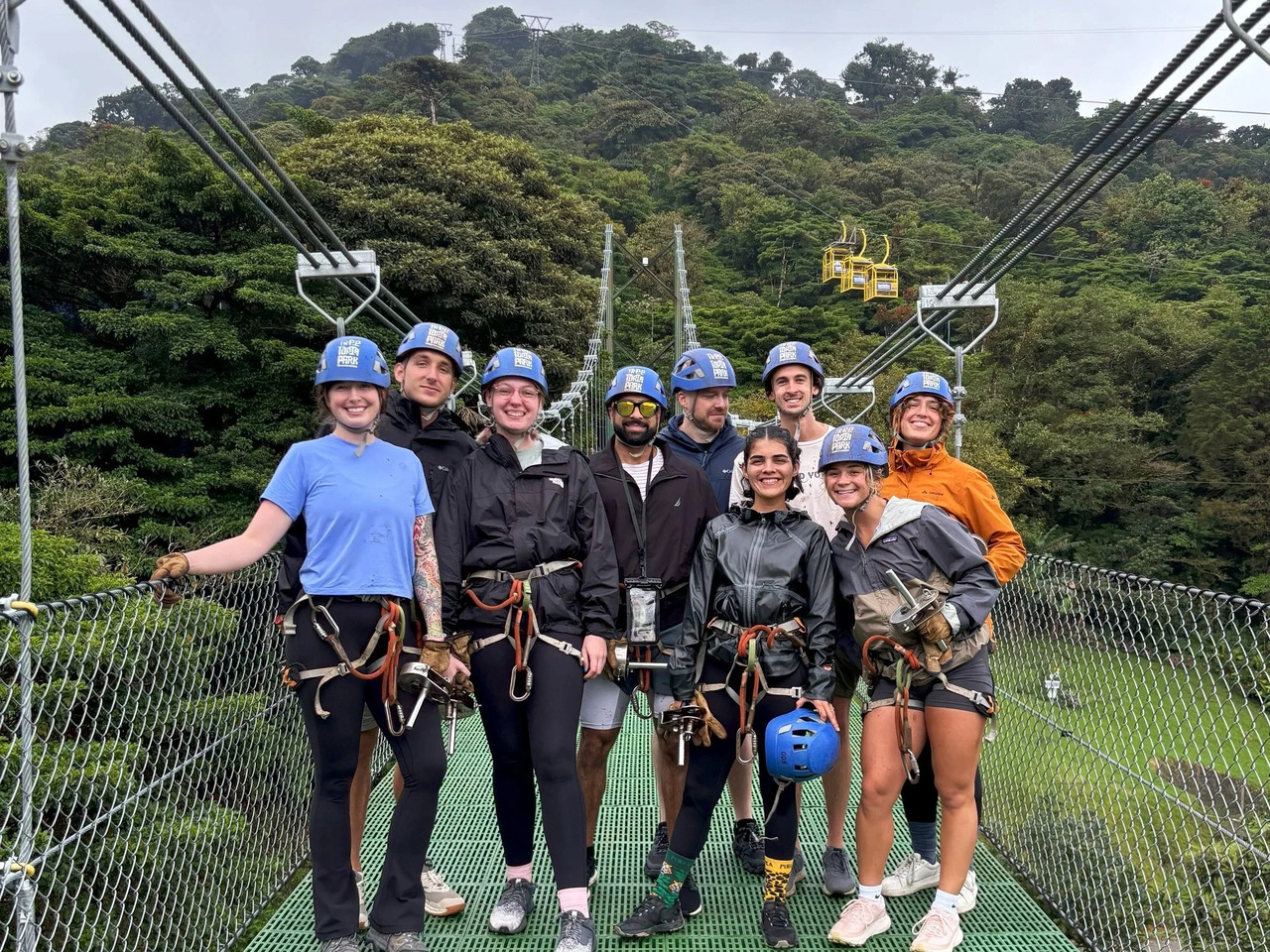Some of the most beautiful places in the world are also hotspots for natural disasters. As the co-founder and CEO of a travel company for young adults operating in 20+ countries, I’m responsible for all our emergency preparedness plans worldwide. Moreover, I live in Puerto Rico, so hurricanes, earthquakes, and tsunamis are always at the top of my mind.
This guide will help you prepare for natural disasters when traveling. While we get some advanced warnings about natural disasters like hurricanes and blizzards, other disasters like earthquakes can occur without notice. For this reason, everyone needs to be prepared before they travel. Having basic knowledge about natural disasters means you can survive even in a worst-case scenario.
This guide to natural disasters while traveling will cover:
The Basics of Disaster Preparedness for Travel
- Water
- Food
- Shelter
- Communication
- Hurricanes and Tropical Cyclones
- Floods
- Tornados
- Earthquake
- Forest Fires
The Basics of Disaster Preparedness for Travel
If you are reading this article, you already know that preparing for a natural disaster is non-negotiable. Mother Nature can strike at any moment, unpredictably. That’s why you should understand what conditions might be like in your travel destination if natural disasters occur. Roads will be blocked, and police and emergency services will be overwhelmed.
It’s not just the natural disaster that we need to be concerned with; it’s the state of emergency that may follow the disaster when crime increases. A Harvard Medical School study says, “Besides the effects of the disaster, women become more vulnerable…and are at increased risk for physical and sexual violence.” I say this not to scare you but to encourage you to have a plan to stay safe in the days after a natural disaster. We’ve all heard the stories about looting after Hurricane Katrina. Sometimes, we may need to evacuate the country as soon as possible.

Disaster Preparedness: Water
As I mentioned in my article, 84 Solo Travel Safety Tips for Every Traveler, one of the first things you should do when landing in a new destination is to buy water. Even if the water is potable in the destination you are traveling to, I like to stock up in case there is a natural disaster where we no longer have access to tap water.
If you are traveling and know a storm is coming or the pipes could freeze, it is a good idea to fill your bathtub and sink with water so you have extra on hand.
Having a water filter, such as a LifeStraw or water filtration tablet is also a good idea.
Always remember the rule of threes. You can only go three minutes without air, three days without water, and three weeks without food. Prioritize accordingly.
Medicine and First Aid
In my article, 12 Travel Safety Items You Can’t Afford to Travel Without, I outlined exactly what I carry in my first aid kit. This includes basic survival supplies such as a tourniquet, trauma pads, triangle bandage, SAM splint, N-95 masks, and extra wrap. But having all the medical equipment in the world isn’t beneficial if you don’t know how to use it. So, taking a First Aid and CPR course every few years is a great idea.
Always have any essential medications with you, and bring extra if you are stuck in your location. Let your doctor know you are traveling and that you’d like a refill of your prescription.
Also, consider asking your doctor to prescribe antibiotics for you before your trip, just in case you need them. Sure, there are clinics abroad that you can visit, but it’s better to have these things on hand in the event of a natural disaster. I also recently heard about a medical service that helps you stock up on prescriptions before you need them.
Enjoying these tips? Check out my book, The Millennial Travel Guidebook: Escape More, Spend Less, & Make Travel a Priority in Your Life.

Disaster Preparedness: Food
To ensure you have healthy food, try to stock up on snacks when you arrive at a new location. I know fasting is all the rage these days, but it’d be miserable to be trapped in a natural disaster without food.
I’m not saying you need to arrive on vacation in Costa Rica and start stockpiling canned goods in case of an earthquake. When traveling, try to pick up snacks that don’t need much refrigeration, like carrots, apples, bananas, nuts, and beef jerky, and consume it throughout your trip.
Shelter During Natural Disasters
During or after an emergency, you will definitely need a roof over your head. As I mentioned, it’s not just Mother Nature we must watch out for in a natural disaster. Crime can increase after a disaster, as criminals know law enforcement is occupied. Thus, having a safe place to stay is extremely important.
Cash is king during a power outage. You might not have access to ATMs during an emergency, so having several hundred or a thousand dollars in cash is a good idea. This way, you can easily pay for a hotel stay for a few nights if needed.
Make sure to keep your receipts for any unexpected expenses and claim them with your travel insurance company.
I’ve worked with the following travel insurance companies for years through our travel company: World Nomads, Safety Wing, and Wanderwell. Read the fine print carefully to see what kinds of natural disasters their plan covers, if any.
To prepare for a worst-case scenario, you may want to travel with a Mylar space blanket or an emergency sleeping bag. These can easily fit into your jacket or backpack pocket and are real lifesavers if you are hiking and need to spend a cold or rainy night in the woods with a broken leg.
Oh, and from our lawyers: If you use our affiliate links to get a quote for travel insurance, we earn a commission. We do not represent World Nomads or any other company. This is not a recommendation for buying travel insurance.
Disaster Preparedness: Communication
Imagine the scenario for a moment: you are in Bali when an earthquake hits. The WiFi is out, and cell phone service is limited. The event has made international news, and your family is frantically trying to reach you. You are trying to find out critical information about road and airport closures. What do you do?
In situations like these or even when you're hiking without cell phone service, I always carry my Garmin inReach Mini 2 Satellite Communicator. I pay $10/month for a handful of text messages per month. It works worldwide and doesn’t rely on WiFi or cell phone service.
If you have an iPhone 14 or later, you can send an SOS text message to emergency services even when WiFi and cell phone service are unavailable. If your Emergency Contacts are set up, your iPhone will automatically send your location to them.
And remember, nothing beats an old-school crank radio flashlight for receiving updates like weather forecasts and emergency communications in a natural disaster. I’ll admit I like to pack light, so I only travel with one if I’m going away for an extended period to a place where the risk of natural disasters is high.
In addition, consider enrolling in the US Department of State’s Smart Traveler Enrollment Program (STEP), which can help you in an emergency and send you email alerts about situations on the ground in a country you are traveling to.
Remember those travel insurance companies I mentioned? They each have 24/7 emergency hotlines that you can call for travel arrangements, doctor referrals, and emergency evacuation.

What to Do in Natural Disasters While Traveling
We covered things you can do to prepare for natural disasters, hoping you’ll never be caught in one. Now, let's find out what to do if a disaster strikes while you are away from home.

What to do in Hurricanes and Tropical Storms
Luckily, people usually receive a warning a few days before a hurricane or tropical cyclone comes their way. Governments typically issue forced evacuation notices, so listen to the weather even while traveling. You can also turn on Push Alerts from your Weather App to increase your awareness of Watches and Warnings issued by local meteorologists.
If you decide not to evacuate and “ride out the storm," stay inside your accommodations away from windows. Fill up your sinks and bathtubs with water for washing, and have clean containers for drinking water. Stock up enough food and water, at least for a week. Also, gather batteries and a flashlight to prepare for a power outage. If you are in an Airbnb, contact your host and bring in patio furniture or anything that could blow away and break a window.

What to do in Floods
Flash flooding can happen extremely quickly. One moment, it’s sunny, and the next, it’s a torrential downpour. I’ve seen this happen while hiking in Costa Rica, where rivers have become uncrossable in minutes. The critical tip to remember is, “Turn around, don’t drown.” No river is worth risking your life to cross. The power of moving water is immense and can easily sweep away your rental car.
If you are in an area that might flood, get to higher ground immediately. And never go into a flooded basement or room where wires may be submerged. Water conducts electricity, and you run the risk of electrocution.

Disaster Preparedness: Tornados
These terrifying storms develop suddenly and wreck everything in their path. If you see funnel clouds or hear a noise described as a freight train coming at you, immediately get to the lowest level of a sturdy building, preferably in a room with no windows.
If you are in your car, pull over and park away from trees. Keep your seatbelt on.
Be sure to bring your emergency kit with you. If you are trapped in debris, blow your whistle, send an SOS text message, or bang on something to make noise. Avoid shouting, as it quickly drains the energy needed to stay alive.

What to do in an Earthquake
I’ve experienced several small earthquakes in New York, Costa Rica, Puerto Rico, and Chile. Sometimes, they're barely noticeable. But my wife, who grew up in Chile, even saw waves sloshing out of her pool as a kid. Also, buildings in some areas are designed to be safer during earthquakes than others. Even small earthquakes can devastate areas not built to withstand the ground beneath them moving. Keep this in mind when traveling to rural or developing regions.
The United States Geological Survey (USGS) advises that if you are indoors during an earthquake, do not exit the building; instead, “drop, cover, and hold on!” Avoid windows, fireplaces, and appliances that could fall on you. Get under a table and hold on to it. Being in a kitchen is the worst place, where things can fall out of cabinets and injure you.
Government authorities typically say it’s best to stay inside instead of trying to evacuate a building because you could be seriously injured. However, I’m skeptical of this advice. While writing this article, I spoke with someone who said she experienced a major earthquake in a developing country and would have been crushed if she had stayed in the building.
After an earthquake, don't go back into a building until an engineer confirms it's safe.
If you are outdoors, avoid buildings, power lines, and anything that could fall on you. If you are driving, stop the car away from electrical wires, signs, and structures, and never stop beneath an underpass or bridge. When you resume driving, watch out for landslides, falling trees, or loose rocks. If you are near the ocean, evacuate to higher ground because of the risk of tsunamis that can occur after earthquakes.

What to do in Tsunamis
Luckily, tsunamis are rare compared to other natural disasters. Most are less than ten feet high, but some can be over 100 feet high, especially in the Pacific. While earthquakes usually trigger tsunamis, interestingly, asteroids can also cause them. Sorry, I couldn’t help but share that fun fact!
Tsunamis do not look like regular waves. Sometimes, they will look like a fast-rising tide or flood. Others give warning signs where the water retreats first. Tsunami water can travel up streams and rivers that lead to the ocean and flood a mile inland.
If you hear tsunami warning sirens, see the sea retreating, or notice a flood coming, run like hell! Get uphill as fast as possible. You could climb a tree or go to the top floor of a study building, but only as the last option. After an earthquake, staying away from the ocean for at least a few hours is a good idea.

What to do in Volcanic Eruptions
If you are going to an area with volcanic eruptions, most governments will have alert systems and let you know the risk level. For example, I was just in Pucón, Chile, next to the Villarica Volcano, where the Chilean Government moved the risk level from yellow to amber. The best resource to check the activity of a volcano you visit is the Smithsonian Institution Global Volcanism Program. Here, you can see bulletins for any volcano worldwide.

If you find yourself outdoors near a volcanic eruption site, get inside a car or building as soon as possible. If you are in your vehicle, don’t drive if heavy ash is falling; instead, be sure to hit the button to recirculate the air already in your car rather than receive air from outside. And remember that N-95 mask I suggested you put in your first aid kit? Now is the time to use it.
If you find your way into a building, limiting the amount that can come indoors is a good idea, especially if you are immunocompromised. Put damp towels under the doors and on window sills, or even plastic over the windows and doors if possible.
If you must go outside, cover all your skin and wear a mask and goggles to protect your eyes and lungs.

What to do in a Forest Fire
According to the US Department of the Interior, humans cause nine out of ten wildfires. Be extra cautious, especially during a drought or a “burn ban.” This means no campfires or fireworks. Always extinguish any open flame entirely until the coals are cold. If you are traveling by car, carrying a fire extinguisher is always advisable.
However, forest fires aren’t all bad. Many ecosystems rely on them to break down organic matter and create fresh ash to rejuvenate the soil. But when wildfires spread uncontrollably, you’ll need to evacuate. Wildfires move extremely quickly, like the ones in Viña del Mar, Chile, that trapped guests in the botanical gardens. If there are wildfires nearby, it’s best to leave the area.
Keep an eye on the weather while you travel, as air quality can be affected by fires thousands of miles away. Also, have an N-95 mask with you to protect your health. When wildfires burn inorganic matter like houses, cars, and plastics, the particulate in the air is especially harmful.
What's the safest way to travel? Group travel companies are a great option since you get to meet new people instantly. Moreover, you’ll have a guide who knows the area well and has a detailed emergency plan. Put your mind at ease and check out our company’s trips for young people aged 21-35.




.avif)


























